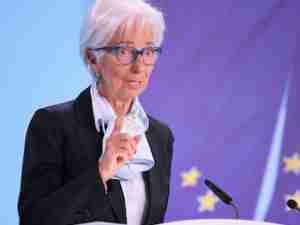The U.S. trade deficit unexpectedly widened in September as exports hit a five-month low, suggesting slowing global demand could undercut economic growth in the final three months of the year.
The Commerce Department said the trade gap increased 7.6 percent to $43.03 billion. Economists had forecast the shortfall at $40.00 billion in September.
“The disappointing performance in export activity suggests that the loss of export competitiveness from the strong dollar and the weak global backdrop are becoming a net drag on U.S. economic activity,” said Millan Mulraine, deputy chief economist at TD Securities in New York.
The trade deficit was bigger than the $38.1 billion gap that the government had assumed in its advance gross domestic product estimate for the third quarter published last week.
The weak trade data came on the heels of a report on Monday showing a decline in
construction spending in September.
Economists said the two reports combined suggested that the third-quarter 3.5 percent annual growth pace could be cut by as much as half a percentage point when the government publishes its revisions later this month.
Trade was reported to have contributed 1.32 percentage points to GDP growth.
U.S. financial
markets were little moved by the trade data.
In another report, the Commerce Department said orders for factory goods fell for second straight month in September. Relatively firm domestic demand, however, is expected to keep U.S. factories humming.
Exports in September fell 1.5 percent to $195.59 billion, the lowest since April, a sign that weakening demand in key
markets such as China and the
euro zone was starting to weigh.
Exports are likely to weaken further after a survey of U.S. manufacturers published on Monday showed a decline in a gauge of export order growth.
Strengthening Dollar
Apart from slowing global demand, export growth is seen crimped by a strong dollar, which so far this year has strengthened by about 4 percent against the
currencies of the country’s main trading partners.
The decline in exports in September was broad-based, with the exception of food and beverages, which rose.
Exports to the European Union fell 6.5 percent in September, while those to China slipped 3.2 percent. Exports to Japan tumbled 14.7 percent. There were also declines in exports to
Mexico and
Brazil.
Overall imports were unchanged in September as petroleum imports hit their lowest level since November 2009. A domestic energy boom has seen the United States reduce its dependence on foreign oil, helping to temper the trade deficit.
Declining
crude oil prices, which hit a seven-month low in September, are also helping to put downward pressure on the value of petroleum imports.
Consumer goods imports, however, were the highest on record, as were non-petroleum imports. Economists were disappointed with the stall in imports, but were encouraged by the rise in consumer goods imports as this was a sign domestic demand was holding firmer.
“The stronger dollar isn’t doing much to spur consumer demand for goods outside of the U.S. borders,” said Jennifer Lee, an economist at BMO Capital Markets in Toronto.
Imports from China hit an all-time high, leaving the politically sensitive trade gap at $35.6 billion, the highest on record. Imports from Canada were the highest since July 2008. (Reuters)
